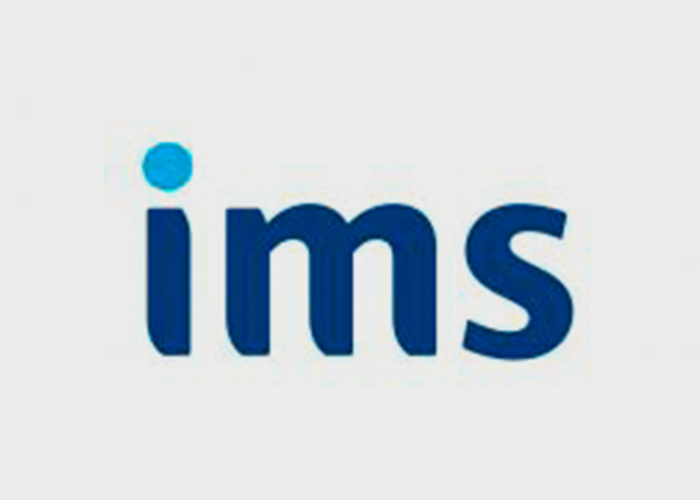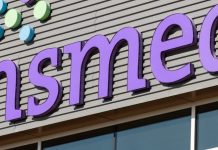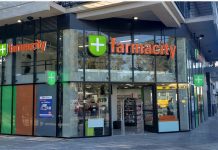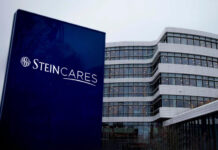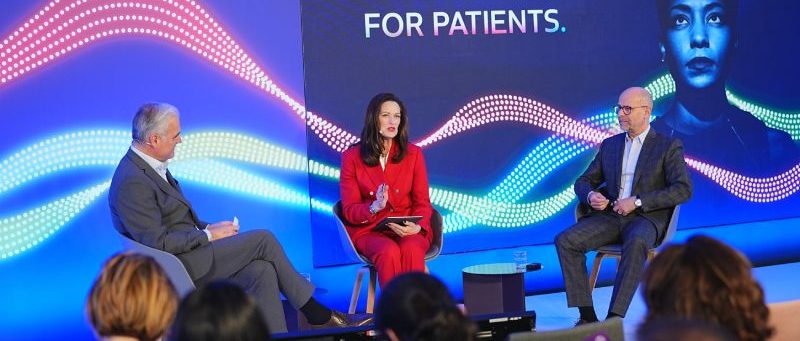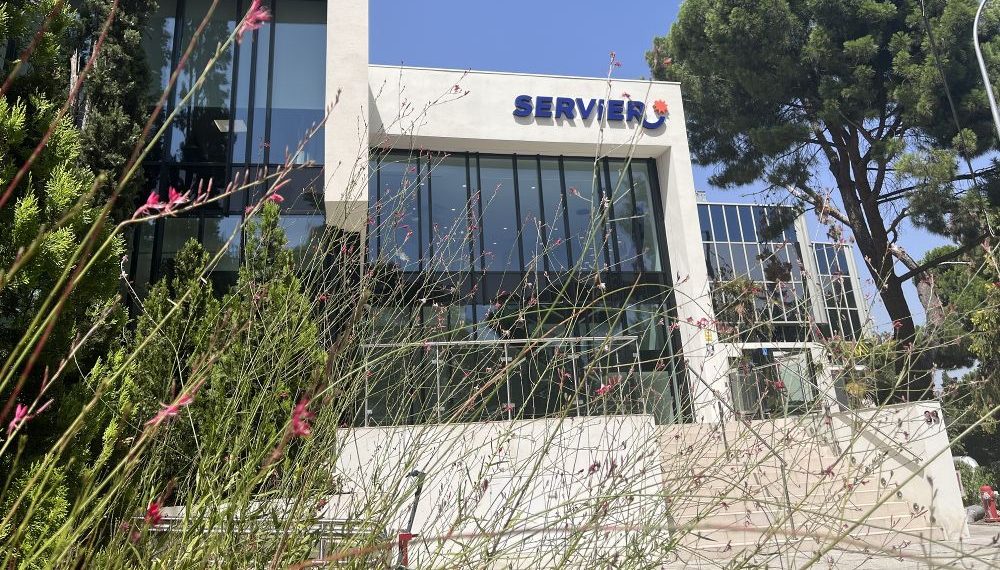Con cero grados en el termómetro se celebró hoy en Buenos Aires el IMS World Review Conference 2012 en el auditorio del Buenos Aires Design, que puertas adentro, también replicaba la temperatura bajo cero.
Para ello se dio cita la industria farmacéutica local a través de laboratorios, droguerías, los principales retailers, cámaras industriales y algunos organismos científico tecnológicos.
El evento contó con la palabra experta de Murray Aitken, vicepresidente senior Healthcare Insight de la compañía, quien auguró un futuro auspicioso para la industria farmacéutica.
Murray dijo que para 2016 el gasto mundial en medicamentos alcanzará los u$s 1.2 billones, gran parte de los cuales provendrán de mercados emergentes, genéricos y biológicos.
También resaltaron que el crecimiento del gasto anual ascenderá de u$s 30 mil millones en 2012, a u$s 70 mil millones en 2016, impulsado por el crecimiento del volumen en los mercados farmacéuticos emergentes.
Asimismo se mostraron muy positivos respecto de las nuevas entidades moleculares: dijeron que en los próximos cinco años se espera una mayor cantidad de moléculas, que en los últimos cinco años.
Obesidad, hepatitis C, diabetes y lupus son algunas de las enfermedades que tendrán nuevas e innovadoras drogas.
También auguraron un buen posicionamiento para la Argentina. Los pronósticos son que en 2016 Argentina ocupará el lugar 14 en el mercado farmacéutico global.
Le antecederán EE.UU, China, Japón, Brasil, Alemania, Francia, Italia, India, Rusia, Canadá, UK, España y Australia.
También dijeron que algunas multis se las verán en figurillas.
Resaltaron que están muy fuertes Merck y Novartis. Mientras que Bayer, Roche, Lilly, BI y J&J necesitarán un impulso necesario y Sanofi, GSK y Takeda requerirán un importante cambio.
Al llegar al panorama argentino el experto Juan Manuel Santa María sobresalió con su análisis más que enmarcado en todas las variables locales y regionales.
Respecto de América Latina se resaltó que la región está viviendo una época de bonanza económica y sobre todo en contraposición a la realidad global. Asimismo diversos sectores de la población están teniendo un mejor acceso a los medicamentos.
Y se reflejó el promedio de gasto per capita según los países tanto para la salud en general como para los medicamentos en particular.
Un solo ejemplo: mientras que Chile invierte u$s 800 para el gasto en salud por habitante, Argentina destina u$s 734.
En medicamentos Chile inyecta u$s 82 y Argentina u$s 123.
Puestos los laboratorios del mercado local bajo la lupa se destacó que Casasco, Baliarda, Raffo y Novartis se han distinguido por el grado de innovación de su portafolio de receta.
También que en OTC, las compañías Genomma y Beiersdorf se han mostrado destacadas.
Se reflejó que los nuevos principios activos están centrándose en las áreas de antidiabéticos, anticonceptivos y antidepresivos. Algunos de los lanzamientos relevantes han sido Onglyza, Victoza, Rubi/Qlaira y Pristiq.
Los oradores de IMS le dedicaron un capítulo especial al tema biológicos.
Dijeron que es una movida imparable y que hay que prestarle atención.
Listaron los principales productos biológicos del mundo. Se trata de Humira, Enbrel, Remicade, Mabthera, Lantus, Avastin y Herceptin.
Señalaron que los productos biológicos en Argentina igualan o superan en ventas a los clásicos productos de síntesis química como Lotrial o Losacor.
El evento cerró con preguntas y todos los asistentes se volvieron a sus compañías con nuevas consignas e interesantes perspectivas.
_______________________________________________________________________________________________
IMS World Review: Pharmerging, scales and outlooks
Friday 8, June 2012
With a temperature of zero degrees Celsius, the IMS World Review Conference 2012 was celebrated today in the Buenos Aires Design auditorium, where the hall replicated the freezing temperatures.
For this, the local pharmaceutical industry arranged a meeting with laboratories, dristributors, the main retailers, industrial chambers and some technological-scientific organizations.
The event was graced with the words and expertise of Murray Aitken, Healthcare Insight Senior Vice President of the company, who predicted a promising future for the pharmaceutical industry.
Murray said that for 2016 the world expenditure in medication will reach $1.2 thousand million dollars, of which most will come from emerging markets, generics and biologics.
It was also highlighted that the annual expenditure growth will increase from $30 thousand million dollars in 2012, to $70 thousand million in 2016, boosted by the growth of volume in the emerging pharmaceutical markets.
In addition, they were very positive about the new molecular entities: they said that in the next five years, a higher amount of molecules is expected than in the last five years.
Obesity, hepatitis C, diabetes and lupus are some of the illnesses that will have new and innovative drugs.
They also predicted a good position for Argentina. The forecasts are that in 2016 Argentina will rank 14 in the global pharmaceutical market.
USA, China, Japan, Brazil, Germany, France, Italy, India, Russia, Canada, UK, Spain and Australia will rank above Argentina.
It was said as well that some multinational companies will have a rough time.
They stressed that Merck and Novartis are very strong. While Bayer, Roche, Lilly, BI and J&J will need a necessary impulse and Sanofi, GSK and Takeda will require an important change.
When talking about the Argentine outlook, the expert Juan Manuel Santa María stood out with his analysis, which was more than framed in all the local and regional variables.
About Latin America, the company highlighted that the region is going through economic prosperity and above all opposing global reality. Moreover, different sectors of the population are having greater access to medication.
And the average spending per capita was shown according to each country, both for health in general and for specific medication.
Only one example: while Chile invests $800 dollars for health expenditure per inhabitant, Argentina gives $734 dollars.
In medication, Chile spends $82 dollars and Argentina spends $123 dollars.
When the local market’s laboratories were put under examination, it was stressed that Casasco, Baliarda, Raffo and Novartis have set themselves apart by the degree of innovation of their prescription portfolio.
Also, of those in OTC, Genomma and Beiesdorf have stood out.
It was shown that the new drugs are centering themselves in the areas of antidiabetics, contraceptives and antidepressants. Some of the relevant launches have been Onglyza, Victoza, Rubi/Qlaira y Pristiq.
IMS’s speakers dedicated a special chapter to the theme of biologics.
They said that it is an unstoppable trend and that attention must be paid to it.
They listed the main biological products in the world. They are Humira, Enbrel, Remicade, Mabthera, Lantus, Avastin y Herceptin.
They pointed out that biological products in Argentina are equal to or exceed in sales the classic chemical synthesis products like Lotrial or Losacor.
The event came to an end with questions and all the attendees went back to their companies with new assignments and interesting outlooks.



